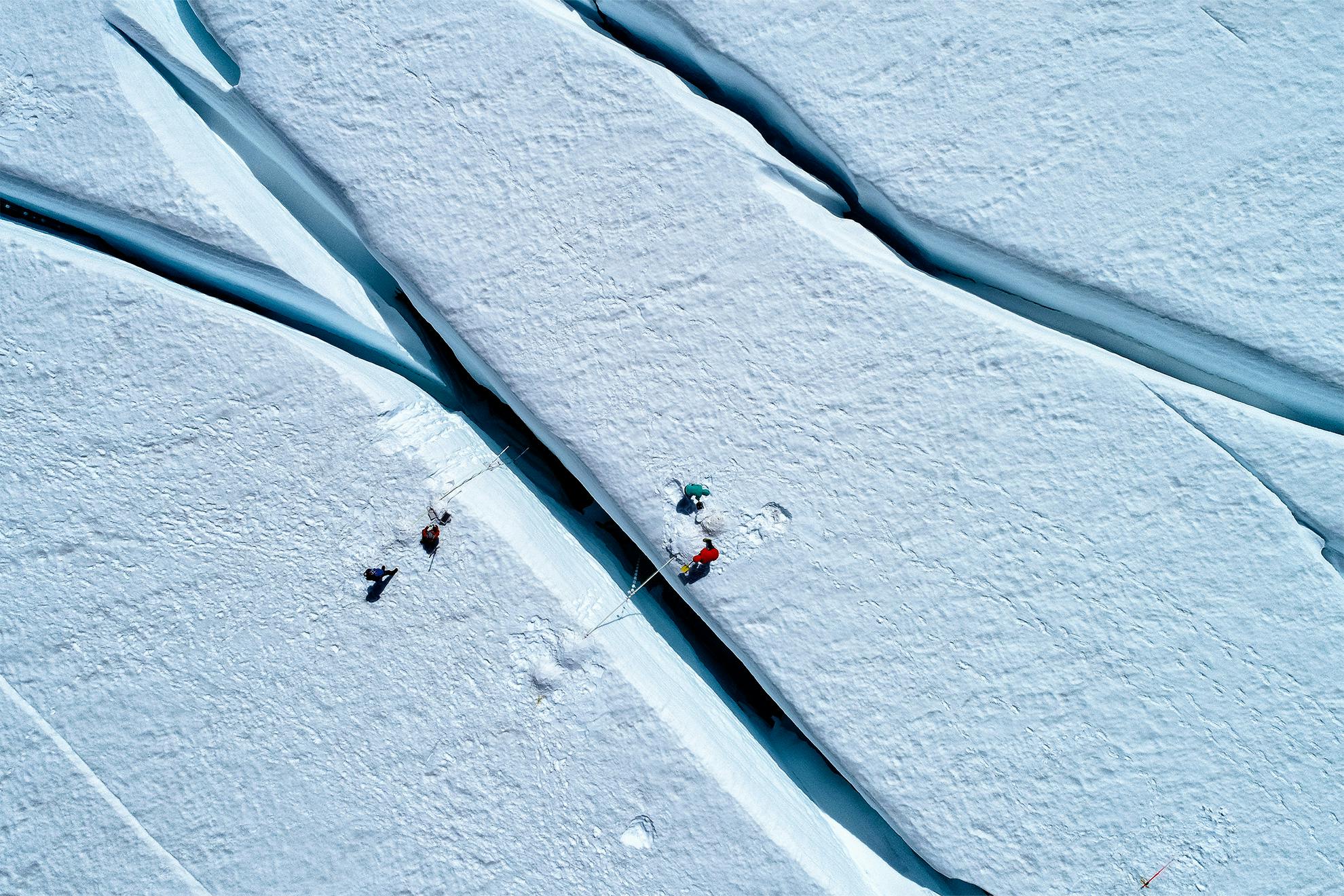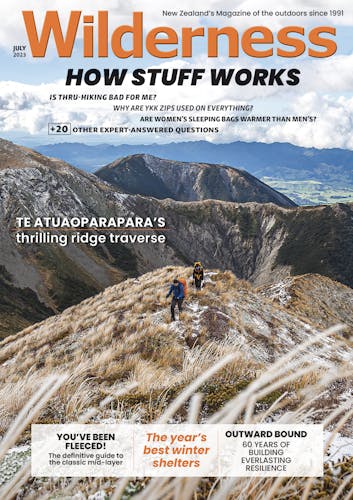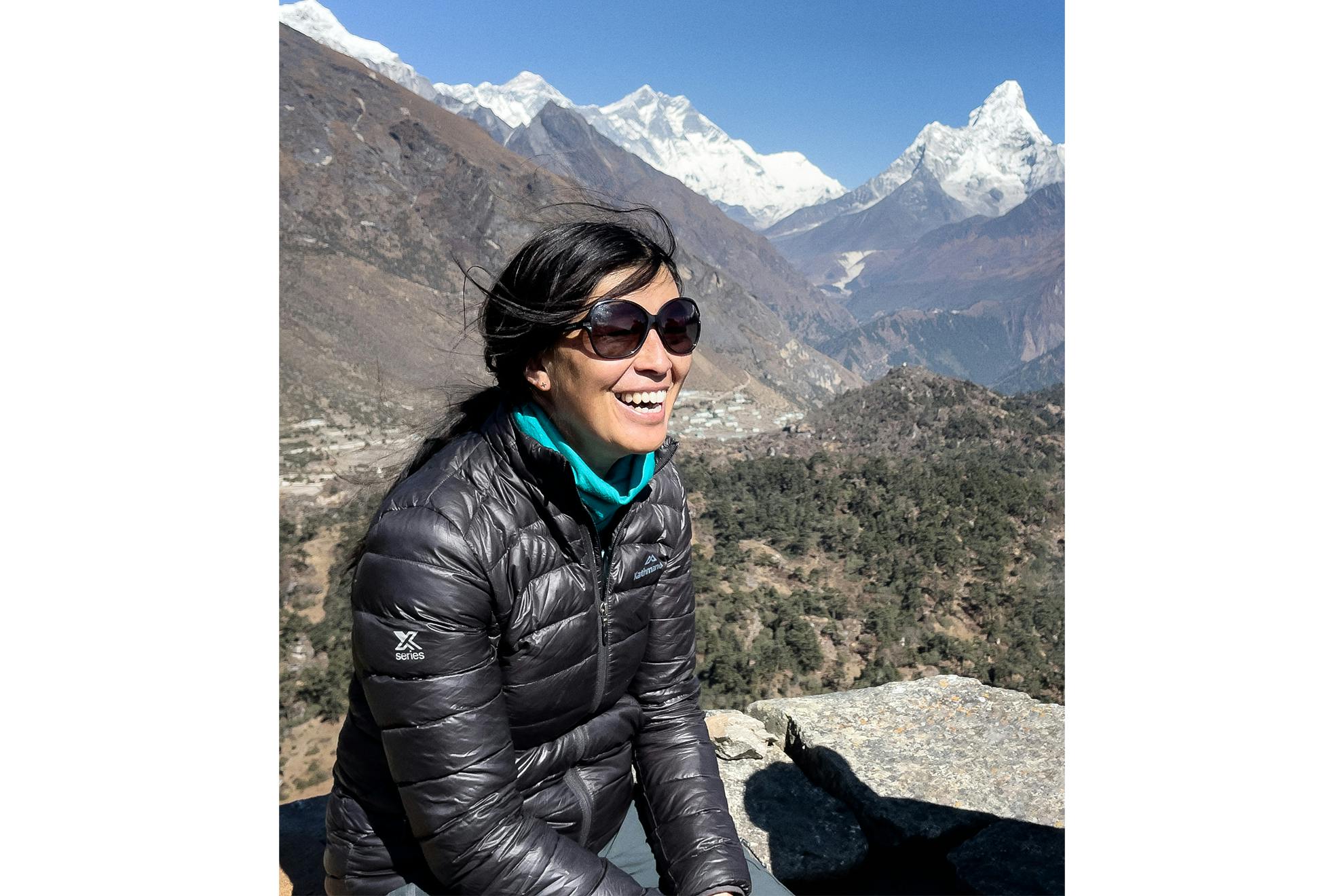Virginia Woolf has turned her love of the outdoors into a career in photography. Her latest project documents the loss of New Zealand’s glaciers due to climate change.
There was a moment at Fox Glacier recently when climate change grief really hit Nelson photographer Virginia Woolf. Ten years earlier she had seen the glacier up close from a track on the northern side of Fox River. Since then the glacier has receded 1000m and that track is closed. The only way to get close on foot is via the south side of the river.
“I almost cried,” she says. “I was in total shock at how far the glacier had receded. It was unreal that, in 10 years, so much had disappeared.”
Looking at the bare rock and water where once was ice, she felt galvanised to raise awareness of climate change. After reading the report of the 2021 Intergovernmental Panel on Climate Change, she wondered how she could help to publicise the results. She decided to make glaciers the subject of a photographic project she has called Final Meltdown.
The outdoors is a major focus of Woolf’s photography; she is a keen tramper, mountain biker, trail runner and paddleboarder. She grew up in Gisborne, but fell in love with glaciers in Canada, where she lived for a year in 1999. She was recently named a Canon Master, one of 15 in Australasia and just four in New Zealand.

Virginia Woolf’s climate change project captures scientists in their element
“I come alive when I’m outdoors,” she says. “It’s a privilege to be able to go places and photograph scenes that some people may never see.”
Final Meltdown focuses on what is left of New Zealand glaciers and on the scientists monitoring their decline, such as University of Canterbury lecturer Dr Heather Purdie. Woolf spent several days on Tasman Glacier, at Tasman Lake and at Fox.
“I wanted to capture the scientists in their element doing the work and at the same time … to capture the beauty of what we still have,” she says. “What we have in New Zealand is really special and it’s disappearing before our eyes, in our lifetime.”
On the ice she felt overawed by the sounds, the colours – from soft pastel blues through to deep aqua and turquoise – the ice caves and formations. But she also watched with dismay as the valley walls eroded in real time.
“It’s beautiful, but devastating being up there too, because you can see the disruption and you can see how dirty the ice is. You can hear the rumble of avalanches, and it’s not ice but rock from the release of pressure as the glacier has melted,” she says. “It’s happening right in front of you. It’s shattering.”
Ultimately, Woolf wants to help people get close to the remnants of glaciers that still exist.
“We don’t see these landscape-scale changes with anything else,” she says. “It was only 10 years ago that my son was born. What’s it going to be like when he’s my age if we keep going the way we are?”








